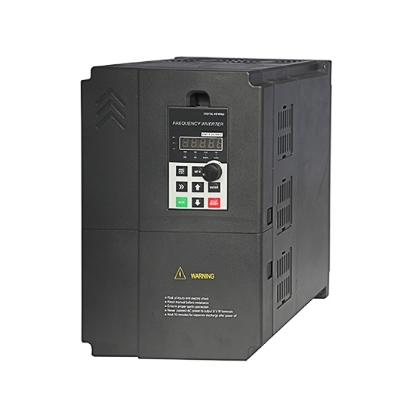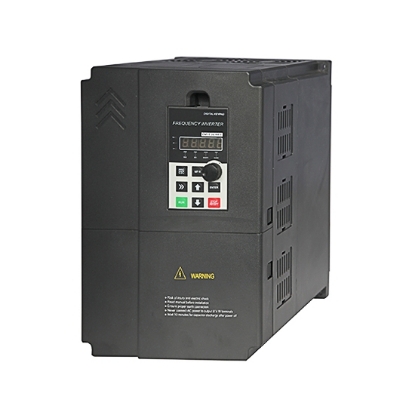-
You have no items in your shopping cart.
- Register
- Log in
- Wishlist
- Shopping cart
Solar Inverter
4 kW Three Phase Solar Pump Inverter, AC 220V
4 kW Three Phase Solar Pump Inverter, AC 380V
5.5 kW Three Phase Solar Pump Inverter, AC 220V
5.5 kW Three Phase Solar Pump Inverter, AC 380V
7.5 kW Three Phase Solar Pump Inverter
11 kW Three Phase Solar Pump Inverter
15 kW Three Phase Solar Pump Inverter
18.5 kW Three Phase Solar Pump Inverter
22 kW Three Phase Solar Pump Inverter
30 kW Three Phase Solar Pump Inverter
37 kW Three Phase Solar Pump Inverter
45 kW Three Phase Solar Pump Inverter
A solar inverter or photovoltaic (PV) inverter is one of the most critical components of the solar power system and is often referred to as the heart of a solar PV system. It converts DC (like 12V/ 24V/ 48V) electricity from the solar panel into AC (like 120V/ 230V/ 240V ) power required to run your applicance.
Inverter.com online store provides a complete range of solar inverters for your photovoltaic system including on grid inverter (grid tie inverter), off grid inverter, micro inverter and solar pump inverter with lower cost. Choose inverter.com to buy your solar inverter benefit from the superior quality, best price and flexible delivery.
What is a Solar Inverter?
A solar inverter or photovoltaic (PV) inverter is a type of power inverter that converts the variable direct current (DC) output of a photovoltaic solar panel into a utility frequency alternating current (AC) that can be fed into a commercial electrical grid or used by a local, off-grid electrical network. It is a critical balance of system (BOS)–components in a photovoltaic system, allowing the use of ordinary AC-powered equipment. Solar power inverters have special functions adapted for use with photovoltaic arrays, including maximum power point tracking and anti-islanding protection.
Types of solar inverters

- Grid-tie inverter: On grid inverters / Grid tied inverters are compact size, which directly convert direct current into alternating current for powering appliances and / or office equipments and connecting to utility grid. For series of 300 watt to 1000 watt rated power inverters, feature with pure sine wave output, no battery design, wide DC input (20V-50V DC) and AC output (90-140V AC / 180-260V AC) range. It functions to convert DC to AC, with the ability to synchronize to interface with a utility line. This inverter is designed to transmit your unused electricity to the grid and has no battery. MTTP technology may be equipped in its input circuitry.

- Off-grid inverter: Off-grid inverters are designed to work alone and cannot synchronise with the grid. They connect to the property in place of grid power and cannot work in conjunction with it. Off grid inverters must supply power from DC to AC instantly to power the appliances. The off-grid solar power inverter works to convert DC to AC from a storage battery. These inverters are used to provide electricity to a number of residential and commercial projects. These lower watt ones are mainly used to power the appliances in each family.
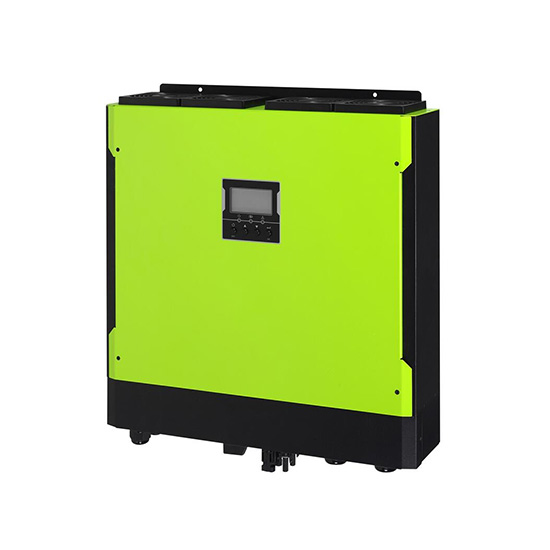
- Hybrid inverter: This hybrid solar inverter also functions to convert DC to AC and its difference is that it can be used in both a grid-tie PV system and an off-grid PV system. The hybrid inverter has a conversion efficiency of 92% and integrates a charge controller, an energy storage inverter and a photovoltaic inverter. It can automatically determine the off-grid/on-grid mode, connect to the smart grid, and achieve peak-shaving and valley-filling.
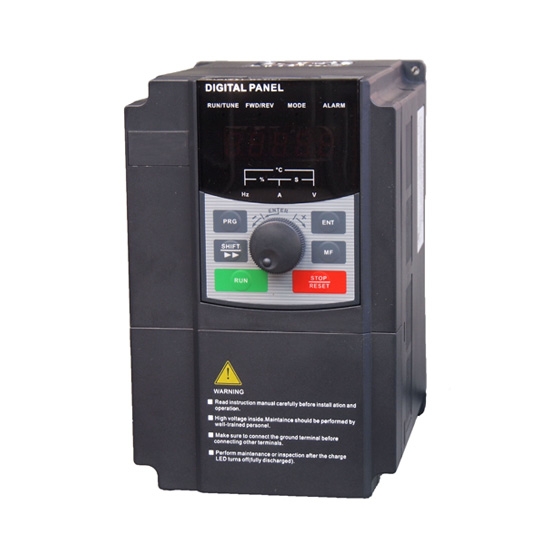
- Solar pump inverter: Solar pump inverter, also called solar variable frequency drive, converts the direct current of solar panel into alternating current, thereby driving various AC motor water pumps (centrifugal pump, irrigation pump, deep well water pump, swimming pool pump, etc.), the input can be the solar DC power supply (DC 200V-350V, DC 350V-750V), also can be single phase or three phase AC power supply (AC 220V, 380V, 400V, 460V, 480V), built-in MPPT control system to maximize the output power of the PV array, is very suitable for use in remote and dry areas.
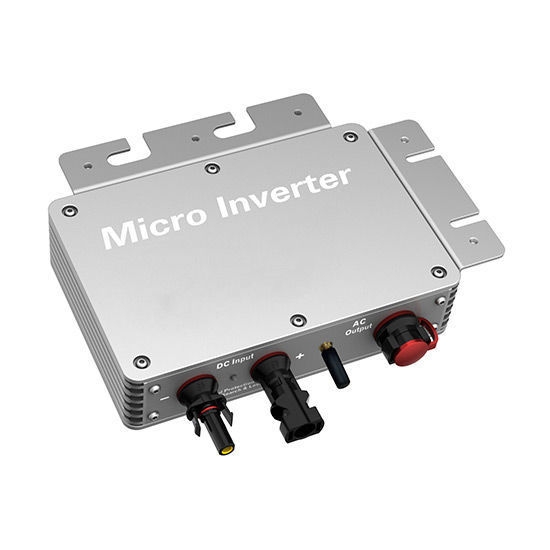
- Micro inverter: A device used with solar arrays to convert the energy that is generated (Direct Current) to usable electricity for a home (Alternating Current). Each micro-inverter is connected to a single solar panel for maximum control and reliability. A solar micro-inverter is one of two types of inverters that can be used with a home solar system. Microinverters have several advantages over conventional inverters, called string inverters. String inverters are connected to multiple solar panels in a row, or string, and convert all the incoming DC energy to usable AC energy. Because the microinverter is connected to a single solar panel instead of a string of them, there are a number of benefits to this technology.
How to choose a solar inverter?
- Learn about the commonly used solar inverters. Generally speaking, there are three major types of solar inverters on the market, including grid-tie, off-grid and hybrid inverters.
- Compare the efficiency of different types of solar inverters: Since efficiency is the soul of every solar inverter, it is necessary to stress this point when you choose your inverter. However, not all high-efficiency inverters are suitable for your personal conditions, and so please be careful when making your final decision.
- Take notice of the important parameter of each solar inverter: A solar inverter doesn’t generate electricity but it needs a certain series of parameters to make sure it works effectively. The important elements you should pay attention to are its input DC voltage, output AC voltage, frequency, and the circuitry that suits it.
- Check whether a solar inverter has tracking devices and offers optional accessories or not.
- Make sure the inverter you choose has stout features: Solar inverters are often installed outside a building. If so, they must be strong enough to protect themselves from different weather conditions.
- Examine the inverter’s cooling system: A cooling system is needed for any electrical device. A solar inverter that might be installed outside a house or in the open air, can produce lots of heat from sunlight and work. Due to this concern, you must choose an inverter equipped with a cooling system that works efficiently.
Using Tips for Solar Inverter
- Connect and install the equipment in strict accordance with the requirements of the inverter use and maintenance manual. During installation, check carefully: whether the wire diameter meets the requirements; whether the parts and terminals have been loosened during transportation; whether the insulated places should be well insulated; whether the grounding of the system meets the regulations.
- The inverter should be operated and used in strict accordance with the provisions of the instruction manual for the use and maintenance of the inverter. In particular: pay attention to whether the input voltage is normal before turning on the power; pay attention to whether the sequence of switching is correct and whether the indication of each meter and indicator is normal when operating.
- Inverter generally has automatic protection against circuit break, over-current, over-voltage, overheating, etc. Therefore, when these phenomena occur, there is no need to stop manually; the protection point of automatic protection is generally set at the factory, so there is no need to adjust it again.
- For solar inverter cabinets with high voltage, the operator generally shall not open the cabinet door, the cabinet door should be locked at ordinary times.
- When the room temperature exceeds 30℃, heat dissipation and cooling measures should be taken to prevent equipment failure and prolong the service life of the equipment.







